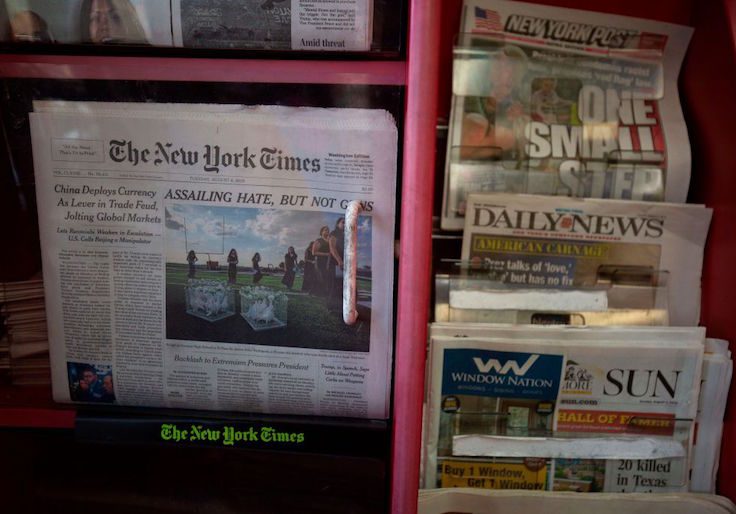I have a review of former New York Times editor Jill Abramson's Merchants of Truth in the summer 2019 issue of the Claremont Review of Books. I was somewhat surprised to find I enjoyed her gossipy, pointed look at digital media's impact on the news industry. On the other hand, I wasn't surprised when Abramson became embroiled in controversy over plagiarism and editorial sloppiness. That's the media for you. Below is the first third of the review. You can read the rest here.
ALL THE NEWS THAT'S FIT TO SLANT
By Matthew Continetti
Robert Kaiser, then-managing editor of the Washington Post, visited Japan for a conference in 1992. One of the presentations he heard there concerned technology and the news business. Digital communications, the speaker said, would make journalism unrecognizable. Kaiser was shocked. He spent the trip home writing a memo for Post executives on what he had learned. "None of this is science fiction," he urged, "it’s just around the corner."
Nothing significant came of the memo. Such was the case throughout the news industry, where editors and publishers ignored similar warnings. They were content with revenues generated by classified ads, coupon inserts, and department store notices. By the turn of the century, they had grown so complacent that when the industry began to change just as the speaker had predicted, they promptly hit a brick wall.
The total circulation of weekday newspapers in the United States was 60 million when Kaiser went to Japan. In 2017 it was an estimated 31 million. In 1992 the total advertising revenue of U.S. newspapers was $31 billion. In 2017 it was an estimated $16 billion. It’s as if Thanos from the Avengers movies had snapped his fingers and eliminated half of print journalism.
* * *
Merchants of Truth by Jill Abramson, who edited the New York Times from 2011 to 2014, is a study of the impact of this digital revolution on four news outlets: BuzzFeed, Vice, the Times, and the Post. Her story does not have a happy ending. The news industry is experiencing interlocking crises of sustainability, credibility, and identity. Print and digital outlets have no reliable financial base. The public has less confidence in media institutions, and deservedly so. Journalists routinely ignore or violate the norms and canons that once defined their profession.
The reader finishes this book with an overwhelming sense of the power of technology to upend politics, society, culture, and business, including the business of news. Classified ads migrated to Craigslist. Google search decimated subscriptions—why pay when you can get stories free online? Facebook privileged clickbait and sharable content over investigations and foreign coverage. The iPhone displaced print as the go-to medium for news. Twitter, at its best, is a free, global, crowd-sourced newswire; at its worst, it is a platform for sanctimony, rumor, insults, and hatred.
Technology changed more than the way we read. It also changed what we read. The websites created by Jonah Peretti—HuffPo and BuzzFeed—provide readers not so much with information as with sensation. With its "LOL," "OMG," "Trashy," "WTF," and "Fail" tags, BuzzFeed categorizes posts not by subject matter but by emotional response.
Sensationalism did not begin with the internet, of course. But technological innovations have altered the way many publishers view their audience. The old conception was that the reader was a democratic citizen who needed to be informed. The new conception is that the reader is a bundle of preferences, desires, and affinities ripe for manipulation. "BuzzFeed’s technologists," Abramson writes, "knew how to use mind tricks and pressure points, how to twist arms, dangle carrots, and use reverse psychology. They had it down to a science: blend one part tough love into two parts obsequious flattery, filter that through nostalgia, and glaze it with scot-free optimism." Whatever that is, it is not shoe-leather reporting.
For more, visit the Claremont Review.
